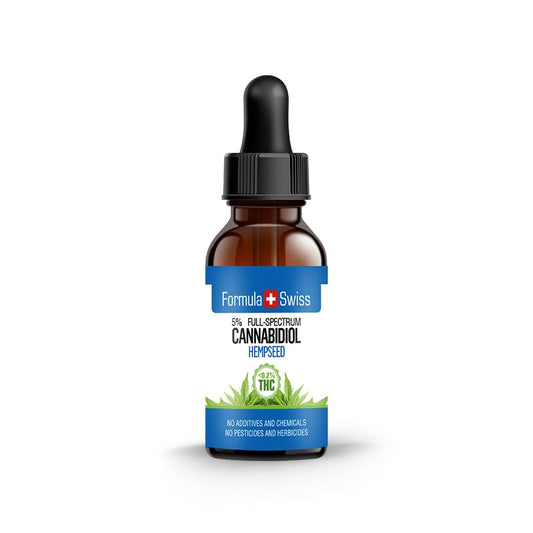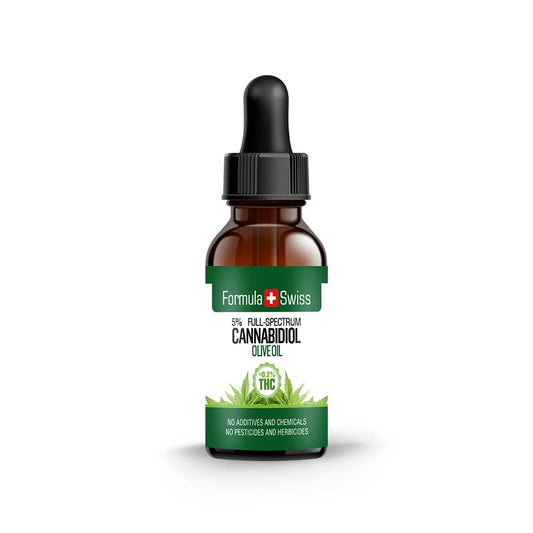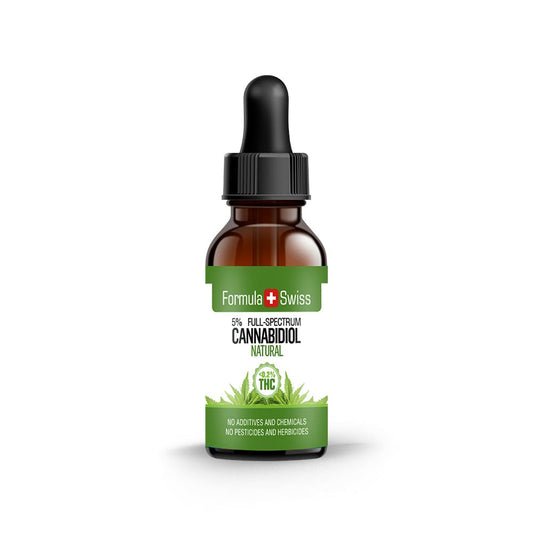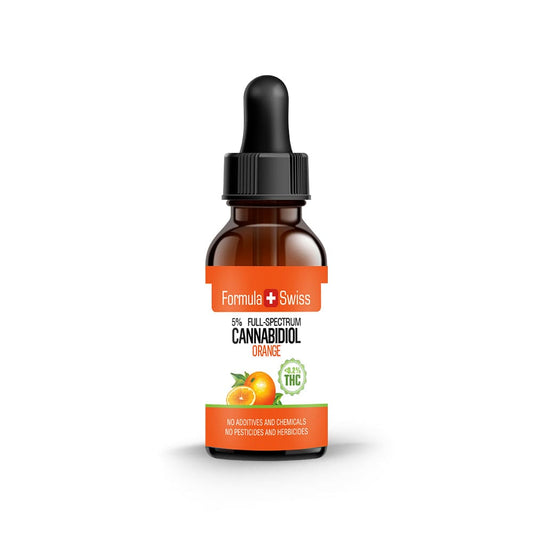While much of the discussion around cannabis often centres on cannabinoids such as CBD and THC, another group of compounds plays an equally important role in defining the character of each strain — terpenes. These aromatic molecules are key contributors to the fragrance profiles that set different varieties apart.
With more than a decade of experience in the cannabis industry, particularly in CBD and hemp production, I’ve seen increasing recognition of the value terpenes bring to the plant. One that frequently stands out in my work is linalool.
Known for its distinct floral aroma, often likened to lavender, linalool contributes to the layered scent composition of cannabis. Working alongside cannabinoids, it helps shape the overall profile of different strains.
In this article, I draw on both research and practical experience to share insights into linalool, its role within cannabis and its wider applications.
Prefer watching over reading? This video covers the key points from the article:
Save up to 30% when you order your CBD oil today
Key takeaways
- Linalool gives certain cannabis strains a floral, lavender-like aroma.
- It is found in over 200 plant species, including lavender and rosewood.
- Linalool shapes the scent and flavour profiles of cannabis strains.
- It is widely used in perfumes, soaps, and other products.
- Terpene content, including linalool, is measured through gas chromatography-mass spectrometry (GC-MS).
This article is provided for informational purposes only and does not relate to any of the products available in our webshop. For more information, please see our full disclaimer.
Brief overview of terpenes in cannabis
Before focusing on linalool itself, it is useful to understand terpenes and their role in cannabis. Terpenes are aromatic molecules found in many plants, including cannabis, and they play an important part in how these plants function.
Terpenes contribute to survival by attracting pollinators and deterring predators. Within cannabis, they also interact with other compounds such as cannabinoids (including THC and CBD), contributing to what is often referred to as the entourage effect.
This concept suggests that whole-plant formulations, which preserve a full spectrum of compounds, may produce outcomes different from those seen when individual components are isolated. More than 200 terpenes have been identified across cannabis varieties, each with its own characteristic flavour and aromatic profile.
What is linalool?
Linalool is a terpene, a class of organic compounds that are commonly found in plants, including cannabis. It is responsible for the distinct aroma profile of certain strains of cannabis.
Linalool has a chemical structure that is composed of two six-carbon rings known as benzene rings connected by an oxygen atom. This gives it a characteristic floral scent that is often described as lavender-like.
In addition to its use in plants, linalool has various applications in industries like cosmetics and perfumes. It can also be synthesised artificially for use in products like soaps and detergents.
Order and enjoy up to 30% off your CBD oil purchase
The importance of linalool
Before focusing on linalool itself, it is useful to understand terpenes and their role in cannabis. Terpenes are aromatic molecules found in many plants, including cannabis, and they play an important part in how these plants function.
Terpenes contribute to survival by attracting pollinators and deterring predators. Within cannabis, they also interact with other compounds such as cannabinoids (including THC and CBD), contributing to what is often referred to as the entourage effect.
This concept suggests that whole-plant formulations, which preserve a full spectrum of compounds, may produce outcomes different from those seen when individual components are isolated. More than 200 terpenes have been identified across cannabis varieties, each with its own characteristic flavour and aromatic profile.
Chemical structure and properties of linalool
Linalool is a monoterpene, composed of two isoprene units (C10H16), with the molecular formula C10H18O.

Structurally, linalool is classified as an alcohol due to the presence of a hydroxyl group. This feature contributes to its versatility and value in a wide range of applications.
Linalool has a boiling point of around 198 °C. Depending on its optical form—either dextrorotatory or levorotatory—it can exist as a liquid or solid at room temperature. Its refractive index, which indicates how light passes through it, typically ranges from 1.460 to 1.505, varying with purity.
Common sources of linalool outside of cannabis
Linalool is a naturally occurring terpene present in a wide range of plant species, some of which contain higher concentrations than cannabis. Its distinctive floral aroma has made it valuable across a variety of industries. Key natural sources of linalool include:
-
Flowers
- Lavender and rosewood are well-known for their fragrance profiles, to which linalool contributes significantly.
-
Citrus fruits
- Lemon and orange peels contain high levels of limonene, a compound that can be enzymatically converted into linalool.
- Limonene is also present in cannabis and can undergo similar conversions to boost linalool production in some strains.
-
Tree essential oils
- Ho wood and coriander essential oils hold significant amounts of linalool.
- Eucalyptus is another source of terpenes, including linalool.
This distribution across various plants highlights linalool’s versatility and the wide range of sources from which it can be obtained.
Scientific research on linalool
Linalool has attracted growing attention from researchers due to its distinctive scent and its influence on the aromatic and chemical makeup of many plants, including cannabis. Studies increasingly highlight its importance in fragrance as well as in ecological functions.
A review published in Frontiers in Pharmacology (2018) examined linalool’s role in plant interactions, including its contribution to natural defence mechanisms. While much of the research has focused on individual compounds or on plants other than cannabis, the findings support the view that linalool plays a significant part in how plants interact with their surroundings.
In cannabis, a 2020 review in Molecules identified linalool as one of several key terpenes that contribute to the aroma and distinctive character of different varieties. Some researchers suggest that terpenes like linalool may work alongside cannabinoids in what’s often called the "entourage effect."
Additional insights from the Journal of Cannabis Research (2021) indicate that varieties with a higher presence of linalool tend to offer a soft, soothing aromatic profile.
Although further research is ongoing, existing studies underline linalool’s role in shaping the unique scent and overall sensory impression of different cannabis varieties.
The role of linalool in cannabis
Linalool is one of the most common terpenes found in cannabis, known for its floral, lavender-like aroma with subtle spicy notes. It plays an important part in shaping the aromatic profiles that differentiate cannabis strains.
Beyond its scent, linalool is also associated with interactions involving the endocannabinoid system, a complex network in the body that helps regulate a range of physiological processes. While research continues to investigate the wider role of terpenes such as linalool, their influence on the overall cannabis profile remains a subject of ongoing interest.

Effects on aroma profiles
Linalool is recognised for contributing to the floral and subtly sweet aromas present in certain cannabis varieties. Depending on the profile, this can include notes reminiscent of lavender, rose or light hints of citrus.
In addition to its distinctive fragrance, linalool helps shape the overall aromatic impression of a variety, often adding depth and balance to the profile.
When combined with other botanical compounds, linalool can introduce gentle, layered nuances to the aroma. For some, this may come across as soft and herbal, while for others it simply lends a more refined character to the scent.
Order CBD oil now and save as much as 30%
How to identify linalool in cannabis strains
Terpenes such as linalool play a major role in shaping the distinctive aroma profiles of different cannabis strains. Detecting the presence of linalool in a particular strain can provide useful insight into its fragrance, helping to set one variety apart from another.
Testing methods that measure terpene content give valuable information about the composition of each strain. Some varieties are known to contain higher levels of linalool, which contributes to their easily recognisable aromatic profiles.
Methods for testing terpene content
The most widely used method for testing terpene content is gas chromatography–mass spectrometry (GC-MS). This technique separates and analyses the individual chemical compounds within a sample, including terpenes such as linalool. However, GC-MS requires specialised equipment and is usually carried out in licensed laboratories.
Another approach is sensory analysis, which relies on trained testers to evaluate the aroma and flavour profile of a strain. While this method does not provide exact measurements of terpene levels, it can still be valuable for identifying varieties with distinctive aromatic characteristics.
Examples of strains with notable linalool levels
Linalool tends to appear more prominently in Indica-leaning varieties and hybrids with Indica heritage. Here are a few examples where linalool often features more strongly in the aromatic profile:
- Lavender: As the name suggests, this variety carries a distinct floral scent, largely attributed to its elevated linalool content.
- LA Confidential: Known for its earthy base layered with pine and citrus notes, this Indica-dominant variety is often noted for its linalool presence.
- G13: A hybrid with a musky, slightly fruity and spicy scent, G13 is frequently mentioned in discussions around linalool-rich profiles.
- Amnesia Haze: Though Sativa-leaning, this variety occasionally shows higher levels of linalool, contributing to its sweet, earthy aroma.

It’s worth noting that terpene levels can differ depending on factors like climate, soil, and harvest timing. For the most accurate insight into a strain’s aromatic profile, lab reports or guidance from informed specialists can be helpful.
Other uses for linalool
Linalool, while often linked with cannabis, is widely used far beyond the plant itself. Its recognisable floral scent has made it a popular ingredient in household and personal care products such as perfumes, soaps and cleaning agents, where it enhances fragrance profiles.
Perfumes, soaps and cleaning agents
Thanks to its pleasant aroma and versatility, linalool is a common component in soaps, perfumes and other cosmetic formulations. It is also used in many household cleaning products, valued not only for its scent but also for its ability to help dissolve dirt and residues.
Beyond these everyday applications, linalool has also been studied for its potential in pest control. The U.S. Environmental Protection Agency (EPA) notes that linalool can act as an insecticide against certain pests, including mosquitoes.

Potential future applications
Linalool continues to attract scientific interest, not only for its role in plants but also for its wider industrial potential. Some studies have even explored its suitability as a fuel additive, owing to its energy-rich structure and clean-burning properties.
This versatility makes linalool a valuable compound across multiple sectors. Its natural availability and wide scope of applications ensure it remains a focus for future developments, particularly in the areas of plant-based innovation and sustainable solutions.
Personal perspective
Terpenes are an essential part of the cannabis plant’s composition, and linalool is notable for its floral aroma with subtle spicy undertones. This terpene plays a key role in the fragrance and aromatic profiles that distinguish different cannabis strains.
Beyond cannabis, linalool is also found in plants such as lavender and basil and is widely used in perfumes, soaps and other scented products thanks to its appealing fragrance.
Ongoing research continues to examine the characteristics of linalool across a variety of applications, from industrial to aromatic uses. Studying terpenes such as linalool provides valuable insight into the make-up of cannabis strains, complementing the role of cannabinoids like THC and CBD.
Together, these compounds shape the complete aromatic and sensory profile of each strain, offering a broader perspective beyond cannabinoid content alone. As scientific studies progress, linalool remains an area of interest for its distinctive contributions to plant chemistry and aroma.
Don’t miss out—save up to 30% when you purchase CBD oil today
Frequently asked questions
What is linalool?
Linalool is a naturally occurring terpene found in many flowers and spice plants. It is used in a variety of applications due to its pleasant scent.
Where is linalool found?
Linalool is found in over 200 different types of plants. Some common sources include lavender, mint, cinnamon, rosewood, and certain types of fungi.
What does linalool smell like?
Linalool has a floral scent that is often associated with a spicy tone. It is commonly used in perfumes, lotions, and other cosmetic products.
Can linalool cause allergic reactions?
While generally considered safe, some people with sensitive skin or allergies may experience irritation or an allergic reaction when exposed to linalool.
Does linalool have any side effects?
While generally considered safe, excessive exposure to linalool can potentially cause skin irritation or allergic reactions in some individuals.
Is linalool found in cannabis?
Yes, linalool is one of the many terpenes that can be found in cannabis. However, it does not produce the psychoactive effects associated with the plant.
Can linalool be used as an insect repellent?
Yes, linalool has been shown to repel certain types of insects, including mosquitoes and fleas.






